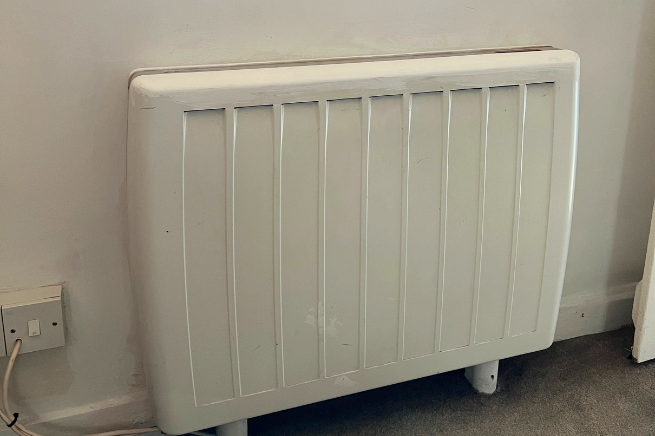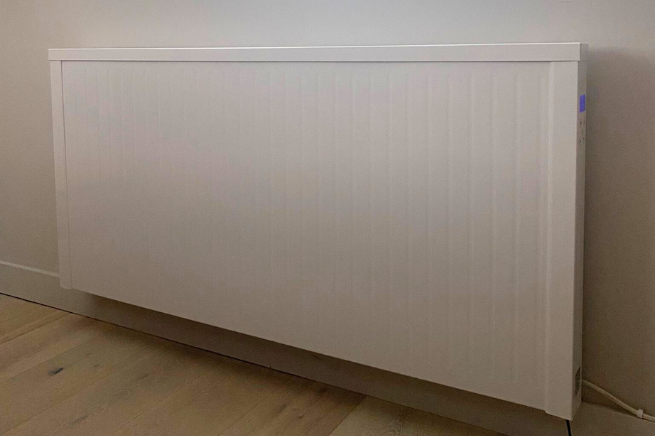
As the colder months creep in, a lot of us start looking for ways to keep our homes warm without breaking the bank. That’s where storage heaters often come into play, especially with their knack for making the most of lower economy 7 tariffs or simply those looking to go off gird and move away from gas heating. Yes, they sound great; charge them up during off peak hours overnight on the lower tariffs, and then let them release heat throughout the day. Sounds like a solid plan for keeping cosy on a budget, right?
But hold on a minute - while it all sounds perfect on paper, the reality of living with storage heaters isn’t so straightforward. Like all electric heating systems, they have their drawbacks, some that might even make you think twice. They do have their perks, but let’s take a look at if they’re really the right fit for your home.
So what exactly are storage heaters? These heating systems smartly utilise off peak electricity rates to charge up over night, storing heat in special ceramic or clay bricks. Come daylight, they slowly release the stored heat into your home. Their concept is clear here: taking advantage of cheaper electricity when demand is low to help cut down on heating bills. Their ability to store heat is where they get their name from.
But here’s where the plot thickens. Despite the smart strategy behind sotrage heaters and their potential to be a cost effective heating choice, the practicality, especially with older models, can be a mixed bag. There are a handful of issues that need to be highlighted.

Old storage heaters, and even some of the new storage heaters struggle with flexibility and control. While it sounds great that your storage heater will gradually release heat throughout the day, have you thought about how this will work on a hot day? Unfortunately, their fixed pattern of storing and releasing heat can’t be changed, so they often lead to energy wastage and discomfort, with too much heat when you don’t need it and not enough when you do.
However, modern storage heaters aim to address these issues. Smart modern storage heaters come with smart controls such as wifi control, and built in thermostats, all for a more precise management of heat output and room’s temperature. Yet, even with these advancements, it’s important to weigh the full spectrum of considerations before deciding. Here’s a closer look at the disadvantages that still accompany storage heaters, despite technological improvements:
High Initial Cost: Storage heaters can be quite expensive, with a large initial investment required for the heater itself and additional high costs for installation.
Heat Loss: Another disadvantage of storage heaters is the heat loss they experience. The heat stored overnight can escape before it can be used, leading to inefficient heating and a waste of energy. This can result in higher energy bills and a less comfortable home. Even some of the modern storage heaters experience up to 40% of heat loss up to the back wall.
Limited Heat Control: Storage heaters do not offer much control over the amount of heat received. Once the heat is stored in the heater, it can’t be adjusted, making it difficult to maintain a comfortable temperature in the room. This lack of control can result in a home that is too hot or too cold, depending on the weather outside.
Maintenance Requirements: Storage heaters require regular maintenance to keep them working efficiently. This can include cleaning, checking the insulation, and checking the electrical components. Failing to keep up with regular maintenance can result in a heater that doesn’t work properly, which can be both frustrating and costly.
Inconvenient Timing: Storage heaters only store heat overnight, so they are not always available when needed. This can result in a waste of energy and money if the heat stored goes unused. For those who work during the day and are not home to enjoy the heat, this can be a major disadvantage.
Inflated Day rate: When used on an Economy 7 electricity tariff, storage heaters can bring about a saving on energy bills, as the heaters charge during the off-peak night-time. However, this means that during the day, there will be an inflated rate. For example if you were to use the washing machine, boil the kettle, use the microwave all these would be more expensive than on the normal rate. Therefore, in the long run it might not be such a huge saving on heating bills.
When compared to central heating systems powered by a gas boiler, storage heaters offer the advantage of not relying on fossil fuels, making them a more eco-friendly option. Yet, gas heating can be cheaper to run in areas with high electricity costs, despite the potential for higher energy bills due to the inefficiencies of some gas boilers.
Electric radiators and modern electric storage heaters represent the forefront of efficient heating technology. These systems provide immediate heat, superior control over temperature settings, and, in many cases, better energy efficiency. They’re designed to meet specific heating needs without the constraints of older storage heater models, offering solutions that are both eco-friendly and adaptable to varying energy prices and usage patterns. You can compare the efficiency and savings in our running cost guide below:

As energy efficiency becomes increasingly paramount, the shift towards more innovative heating solutions is evident. The integration of smart technology in modern storage heaters and electric radiators allows for dynamic control over heating, adapting to the household’s needs and external temperature changes. These modern solutions, equipped with features like built-in thermostats, wifi control, and compatibility with renewable energy sources, mark a significant step forward in the quest for efficient heating.
The journey from static storage heaters to dynamic, energy-efficient home heating solutions reflects the broader shift towards sustainability and adaptability in household energy usage. While storage heaters, especially newer models, have their place in certain contexts, the evolution towards systems that offer more control, efficiency, and alignment with eco-friendly practices is undeniable. Whether it’s through improved storage heating technology or alternatives like electric radiators, the goal remains the same: to provide cost-effective, efficient, and convenient ways to heat your home, tailored to the modern lifestyle and its environmental responsibilities.
Tags: Understanding Heating, General Guides.

If you are considering electric heating/electric radiators, then this guide tells you everything you need to know. Discover this modern, sustainable and economical method of heating that gives you complete control and comfort. Download Free Guide now.

*Trust Electric Heating needs the contact information you provide to us to contact you about our products and services. You may unsubscribe from these communications at any time. For information on how to unsubscribe, as well as our privacy practices and commitment to protecting your privacy, check out our Privacy Policy.
Quick installation and a 100 day warmth guarantee. Whether you’re buying one or several radiators, if our radiators don’t heat your room to a minimum of 20 degrees we will undertake to upgrade or replace the radiators free of charge.
Book your free consultation